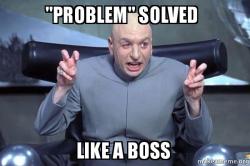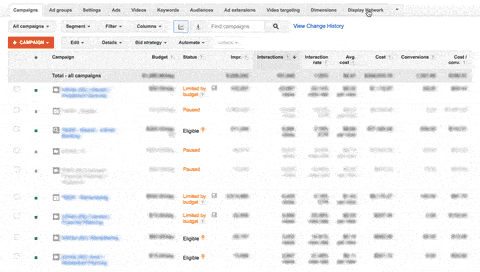by Craig Wakefield • July 6, 2016
How AdWords Similar Audiences Cut Cost-Per-Lead by 58%
Paid search advertising is great, but your audience is inherently limited to people who already know what they want—what about the people who need your business but don’t realize it?
Enter AdWords’ similar audiences.
AdWords’ Similar Audiences
Similar audiences are a twist on the classic AdWords remarketing list.
With remarketing (aka “retargeting”), you use the Google Display Network to display ads to people who have already visited your site.
With similar audiences, you can take things a step farther and target people who behave online like people in your remarketing list. This allows you to get around one of the biggest problems with display advertising: relevancy.
When you set up a normal Display Advertising campaign, you basically have to guess at where to display your ads.
You have some control over where your ads display, so you can tell Google to target specific websites or site categories, but really, you’re just guessing at where the relevant traffic will be.
And, like any guess, sometimes you get it right, sometimes you get it wrong.
For this reason, display ads have largely fallen out of favor amongst AdWords advertisers. They certainly have their place and can produce great results with enough TLC, but it can be hard to get them to perform.
The only problem is, display ads are one of the best ways to get in front of a new audience. If you’re not advertising on the Display Network, you could be missing out on a lot of potential business.
It’s a bit of a conundrum, no?
This is why similar audiences are such a great option. You don’t have to guess at which sites or site categories fit your audience. Similar audiences lets you target your ideal audience and Google will send display ads to them everywhere

The only question is, do similar audiences actually work?
Case Study
About a month ago, I decided to try out similar audiences with a client in the insurance industry.
I had been working with this client for quite some time and had their paid search campaigns running pretty smoothly.
To get more out of their paid search campaigns, I had been running remarketing campaigns as well. We had seen some pretty good success with remarketing, so I wanted to see if similar audiences would allow us to use our remarketing audiences to expand our results.
I decided to test this out by advertising to people who were similar to our converting audience.
I already had an audience built for my converting audience (so that I could exclude them from our remarketing ads), so I opened up my client’s AdWords account and targeted a new ad group based on users who were similar to my “All Converters” audience list as follows:

To my surprise, the list grew very large, very quickly.
Almost immediately, we had an audience of almost 2 million people! However, over the next 10-14 days, Google seemed to figure something out and the list dropped down to around 500,000 members.

The results were dramatic. Overnight, we had a 62% increase in converted clicks and a 45% reduction in cost per converted click.

Once I saw the sort of results this campaign was driving, I pushed a ton of budget towards these ads.
However, even after dropping over a third of our total budget on these ads, I was still losing more than 80% of my potential impressions!
To be honest, I’m still trying to figure out what the upper limit of similar audiences is for this client.
At the moment, similar audiences conversions cost 58% less than paid search conversions, so it will be interesting to see just how many clicks and conversions we can drive through similar audiences targeting.
Why This Worked So Well
Obviously, I’m still nailing down the specifics of why similar audiences produced such great results, but based on my results so far, I’d recommend using similar audiences in the following situations:
1. Broad Market
This client’s offer appeals to a very wide audience. As a result, Google had a very diverse audience to draw data from and an equally broad group of relevant people to display ads to.
2. Great Conversion Tracking
We put a big emphasis on tracking all conversions at Disruptive, so Google was able to use converters, not just clicks to create our similar audience.
Not all traffic is created equal—basing our list on converters allowed us to target people with the highest likelihood of clicking and converting.
3. Large Audience List
We’ve been building our “All Converters” audience list for quite some time, so the list had thousands and thousands of members for Google to assess.
This approach may work well for clients with smaller lists, too, but you will need at least 500 people on your list to use similar audiences.
There were probably other factors at work as well, but these 3 elements seem to be obvious contributors to the success of this similar audience campaign.
Implementing Similar Audiences
Setting up a similar audiences ad group takes about 3 minutes (or less), so it’s well worth giving a shot if you’ve been tracking conversions.
Here’s what you need to do:
- Open your AdWords account and click on the Display Network tab.
- Select the ad group you want to add your similar audiences to and then click Interests & Remarketing.
- Click the “Select category” dropdown menu and select “Similar to remarketing lists.”
- From there, you should be able to see all of your remarketing lists. Click the add button next to the lists you are interested in and your audiences will appear in the “Selected audiences” column.
- When you’re finished, click ‘close’ and then ‘save’.
To walk you through the process, here’s that GIF again:

It’s quick, it’s easy, and it delivers great results. Give it a shot!
Conclusion
If you aren’t using similar audiences already (and most people aren’t), you should consider trying them out.
As good as your AdWords campaigns might be, your advertising may be seriously limited by the number of people who search for your keywords every day.
Similar audiences give you a way to use your paid search audience to discover new potential customers who aren’t even aware that they need your business. That means you can combine paid search and display advertising to really drive value for your company!
By the way, if you’d like me to take a look at your account and help you decide if similar audiences would be a good fit for you, let me know here or in the comments. I’ll even help you set them up!
Have you tried similar audiences before? What was your experience? Are there additional factors to consider in deciding if similar audiences are right for your business?





